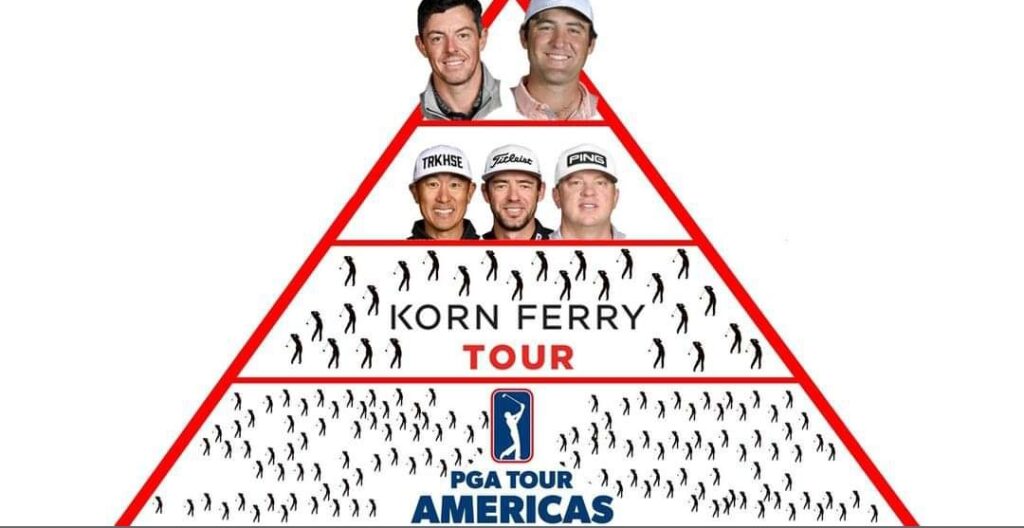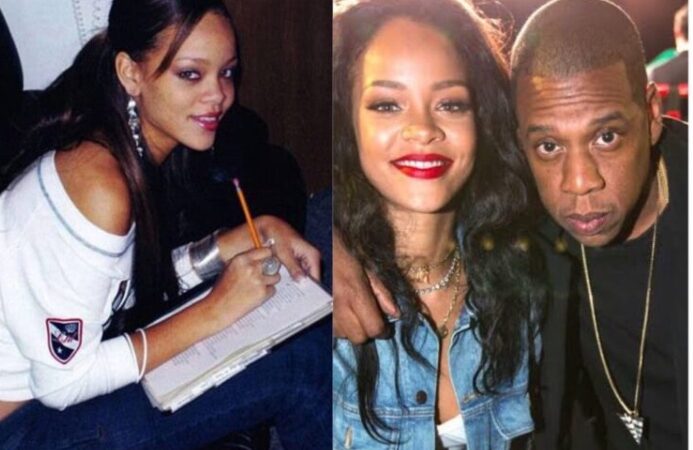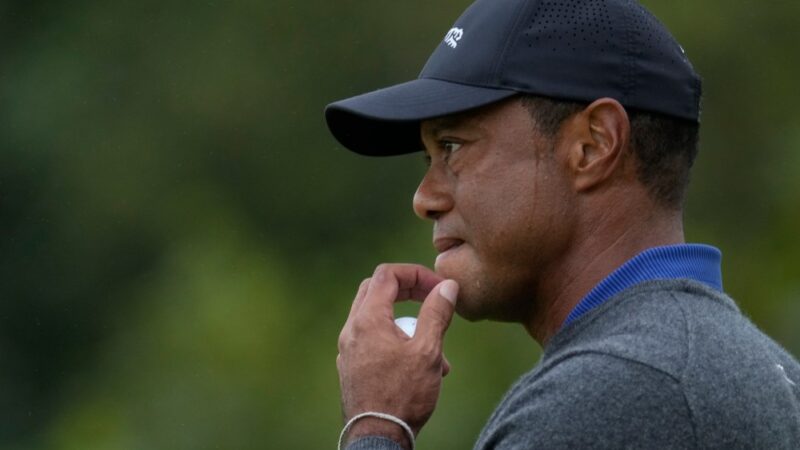There has always been a hierarchy in men’s golf. It’s improved now.

When Planet Earth takes five minutes to demonstrate in stunning 4K that, yes, great white sharks do really make sandwiches out of seals, it always seems a little graphic.
The adorable, chattering seals, playing in the water. We have a tendency to feel sorry for them, perhaps because popular culture has taught us to fear apex predators as well, but maybe the documentaries capture these moments in graphic detail to make their points really stick. The structure of the food chain is as follows. On paper, everything appears tidy and organized, but in practice, it may become chaotic. Predators occupy higher altitudes. Next on the list are the customers. Even lower are the producers. That’s just the way things are.
But we can’t turn away. The natural order of existence makes the greatest sense through these images, in addition to the fact that the primitivism of nature is fascinating. The system doesn’t feel out of order until the seals join together in large numbers, as demonstrated on Planet Earth III. It’s similar to pro golf now.
In this sense, the professional division of the sport has always been dysfunctional, with seals not being in danger from shark attacks. Furthermore, the situation has gotten worse recently, mostly as a result of, uh, new fishermen who are poaching the ecosystem. In addition, the seals are agitated because the PGA Tour is at last better defining its food chain than it was. Nate Lashley, and the 19 others who signed on to join The Great FedEx Cup Points Fight.
This is nothing new; golf has always been one of the messiest sports in comparison to other sports. Although its structures have a strong past, they are obviously quite fragile. Unlike other professional sports, where players compete in two leagues consisting of eight four-team divisions, it is impossible to accurately depict the structure of the PGA Tour. Even the somewhat disorganized European football has a clear progression system: place yourself in the top three and you’ll advance. If you place among the lowest three, you will drop. They are known as tables; they have a distinct shape and are simple to define. But how does professional golf look? Frequently, it’s merely a subjective rating that is thick in some places and thin in others.
In the most important way, though, pro golf has just been a bunch of stacked rectangles, with the PGA Tour up top. PGA Tour Canada was on the same, lower level as PGA Tour Latinoamerica. In between was the Korn Ferry Tour. For decades it was largely meritocratic. Excel within one area and you’ll move up. Only, once you joined the 220 or so at the top, there wasn’t anywhere higher to go.
The old PGA Tour maintained a relative homogenization of status up there. With roughly 130-150 spots in most tournaments, it wasn’t that special to be No. 45 compared to being No. 95. Shoot — being No. 125 was not-so-secretly the key to a clear mind and guaranteed schedule.
Even with a conditional ranking of No. 145, that was still rather impressive. Many times, No. 145, starting with the same score on the same course as Nos. 1 and 9 and 32 and 58, might yet earn a Thursday tee time. It was meritocracy, but only insofar as it applied to those four-day competitions. It was enjoyable to be a seal. Up until August 2022, when the sharks convened in Delaware and determined that a change in course was imperative.
Though it’s still a little unclear, the PGA Tour of the future will look different. Just a triangle on top, not all that different from the food pyramids we saw in middle school textbooks explaining the natural order of ecosystems.
In all honesty, that triangle’s chances of surviving at the elite-elite level are the best, and it will also have the largest payouts and the strongest competition.
While No. 95 may only play a schedule worth $180 million in purses, No. 45 will play a schedule worth almost $300 million in purses. After finishing in fifth place, No. 45 will undoubtedly collect more FedEx Cup points than No. 95 from the same position. The wriggling we’ve seen from the bottom of the pyramid indicates that the system won’t feel entirely equitable. Not initially, anyhow. However, it will unmistakably identify a shark from a seal and show how much longer one can survive without the other. Something similar to Planet Earth will prevent us from turning away.


